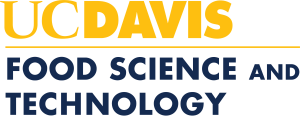COURSE GOALS: Based on the student's knowledge of general chemistry and biochemistry, this course develops advanced topics with an emphasis on the applied aspects of food chemistry with the help of real-world examples and guest speakers from industry and academia. Problem-based learning and group work is integrated into the course to help students apply scientific principles to understanding the chemical properties of foods.
PREREQUISITES: Undergraduate course in Biochemistry and Organic Chemistry. Undergraduate course in Food Chemistry is recommended.
RESTRICTIONS: Restricted to Food Science graduate level standing or consent of instructor.
COURSE FORMAT: Class meetings are lectures and occasional discussions. The course grade is derived from the midterm examination and the final examination.
TOPICAL OUTLINE:
- Sensory science (flavor, sensory preferences, analytical sensory testing, Consumer preference & acceptance testing)
- Carbohydrates (structure, nomenclature, conformation, chemical reactions, glyco-conjugates, prebiotics)
- Proteins (aminoacids, primary/secondary/tertiary/quaternary structure, post-translational modifications, milk proteins, plant proteins)
- Lipids (classification, metabolism, processing, oxidation, glycolipids and their bioactivities)
- Analytical methods (electrophoresis, chromatography, spectroscopy and mass spectrometry) applied to the analysis of macromolecules and lipids.
- Introduction to food forensic, functional foods and nutrigenomics.
TEXT USED: A wide range of reference books, monographs and scientific papers are made available through the reserve systems of the departmental and main libraries. The book by H. D. Belitz and W. Grosch, Food Chemistry, translation of the second German edition (or translations of newer German editions), Springer Verlag Berlin, 1987, will serve as principal textbook of the course.
